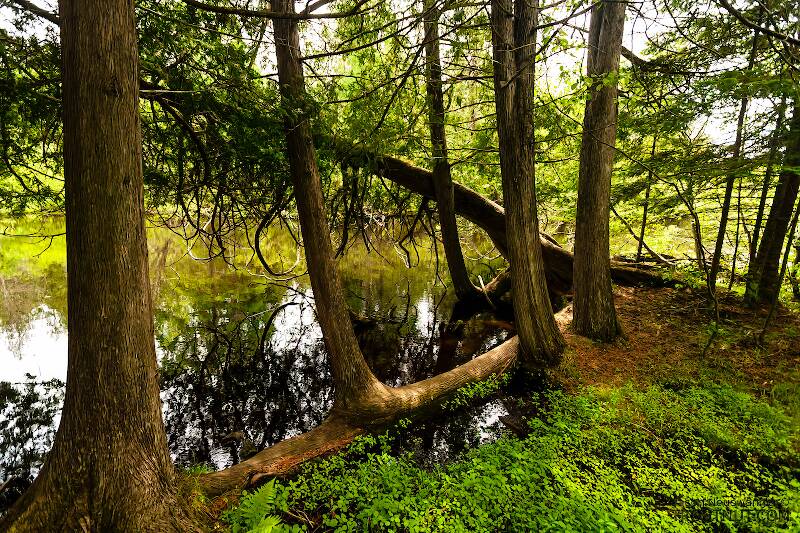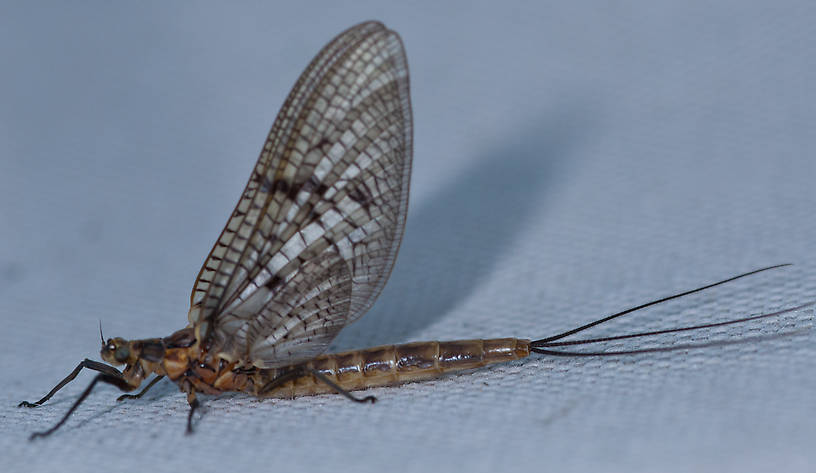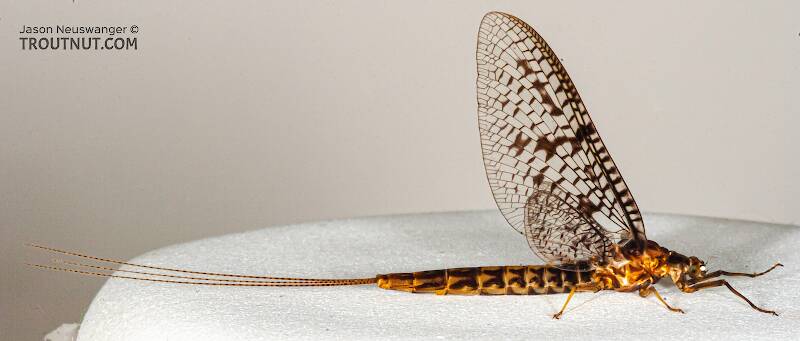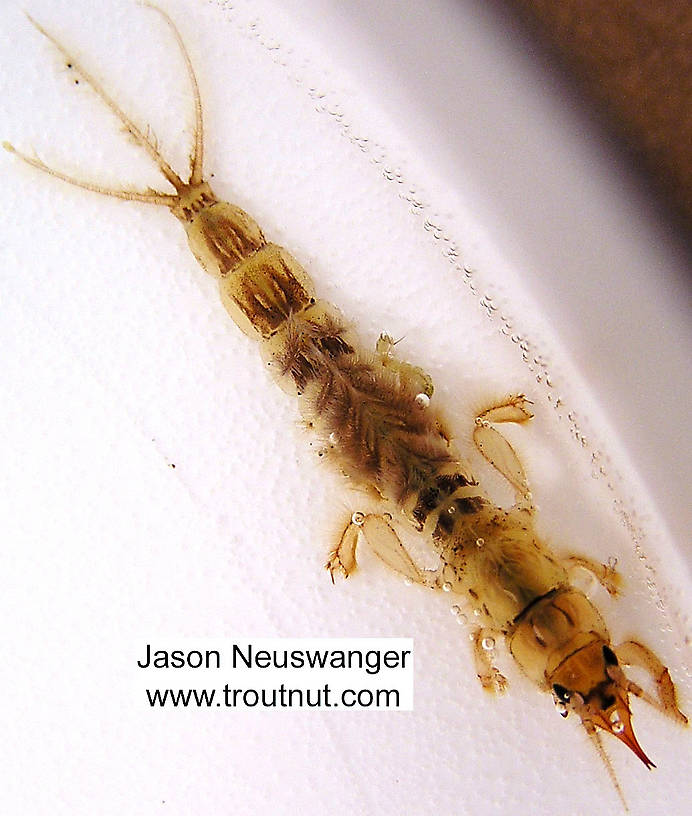
Blue-winged Olives
Baetis
Tiny Baetis mayflies are perhaps the most commonly encountered and imitated by anglers on all American trout streams due to their great abundance, widespread distribution, and trout-friendly emergence habits.
Featured on the forum

Troutnut is a project started in 2003 by salmonid ecologist Jason "Troutnut" Neuswanger to help anglers and
fly tyers unabashedly embrace the entomological side of the sport. Learn more about Troutnut or
support the project for an enhanced experience here.
Eastern Brown Drakes
This common name refers to only one species. Click its scientific name to learn more.
Mayfly Species Ephemera simulans
These are very rarely called Eastern Brown Drakes.
The Brown Drakes are a favorite hatch of many in the Midwest, and they make a good showing on localized waters across the country. They are usually the first in a series of big drakes which bring large trout to the surface at twilight and into the early hours of the night. The experience can be much like fishing the Hexagenia limbata hatch, except that the nymphs seem to emerge from slightly more wadeable, sandy bottoms instead of the boot-sucking mud underlying the best Hex water. It will draw big trout out from the depths of a big pool to feed in the shallow tailout after dark.
See 12 more specimens...





